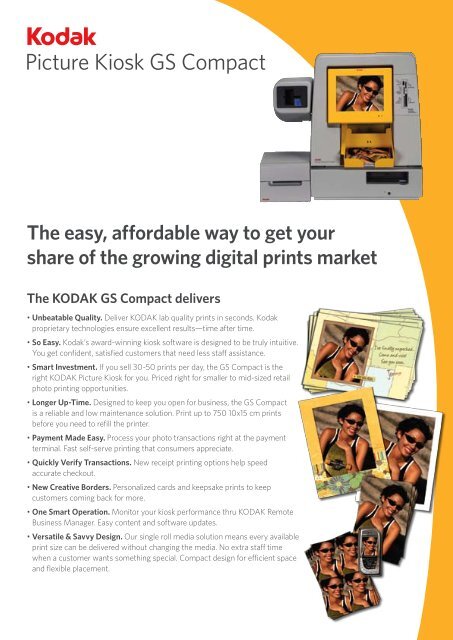

Disposable cameras use the same technique so that the user does not have to rewind. Some motorized cameras unwind the film fully upon loading and then expose the images in reverse order, returning the film to the cassette this protects all images except the last one or two, should the camera back be accidentally opened. Most cameras require the film to be rewound before the camera is opened.
Kodak picture kiosk document movie#
It has the same dimensions and perforation pitch as 35 mm movie print film (also called "long pitch", KS-1870, whereas 35 mm professional motion picture camera films are always "short pitch", BH-1866). The end of the film is cut on one side to form a leader. The film is clipped or taped to a spool and exits via a slot lined with flocking. Individual rolls of 135 film are enclosed in single-spool, light-tight, metal cassettes to allow cameras to be loaded in daylight. Even though the format is much smaller than historical medium format and large format film, being historically referred to as miniature format or small format, it is much larger than image sensors in most compact cameras and smart phone cameras.
Kodak picture kiosk document full#
The size of the 135 film frame with its aspect ratio of 1:1.50 has been adopted by many high-end digital single-lens reflex and digital mirrorless cameras, commonly referred to as " full frame". Despite competition from formats such as 828, 126, 110, and APS, it remains the most popular film size today. It quickly grew in popularity, surpassing 120 film by the late 1960s to become the most popular photographic film size. The term 135 was introduced by Kodak in 1934 as a designation for 35 mm film specifically for still photography, perforated with Kodak Standard perforations. The engineering standard for this film is controlled by ISO 1007 titled '135-size film and magazine'. It is a film with a film gauge of 35 mm (1.4 in) loaded into a standardized type of magazine – also referred to as a cassette or cartridge – for use in 135 film cameras.

Leica I, 1927, the first camera worldwide with 135 filmġ35 film, more popularly referred to as 35 mm film or 35 mm, is a format of photographic film used for still photography.


 0 kommentar(er)
0 kommentar(er)
